I spoke with one of my nutrition coaching clients today and she stated she feels real guilty when she doesn't exercise every single day, and sometimes twice a day. While this may seem ridiculous to some people, it is a very common phenomenon that exists in the fitness world. Many minds are flooded with images of 6 pack abs which are flashed all over social media. False hope of getting shredded coils people into the trap of signing up for programs that is all about heavy workouts to yield "shred" with no science to back its claims. If one submerges themselves into a vigorous program every day of the week, they might think that they can look that way. But the fact is, not every body is built the same and not everybody is training for a specific sport or race. To top that, not every shredded body is healthy. Ask yourself which is more important; shred or optimal wellness? Most people, therefore, only need at most 250 minutes of moderate to vigorous physical activity a week. If one wishes to get a little more, then they are best off doing more of a restorative plan to prevent injury and overtraining.
According to Pain Management Specialist of LaserMDPainRelief.com, Dr. Harold Kraft, "Vigorous exercise is naturally followed by muscle inflammation. Unless you allow adequate muscle recovery, the inflammation will accumulate, leading to pain and early muscle fatigue. Every exercise program should have a recovery phase built into it."
For those of you who train hard core and play sports, do the following program to achieve adequate muscle recovery as Dr. Kraft mentioned. If you aren't an athlete and simply live a sedentary lifestyle, then this program is for you too.
It's best to do these restorative moves in a calm environment with no television, no phone, and no distractions. Just you and perhaps some calming music, lit candles and dimmed light. Calm down your sympathetic nervous system from fight or flight and allow the mind to relax so that the muscles can follow. Restoring your systems back to working in synergy with one another is such a missing link in the fitness industry so I invite you to take these few restorative moves and begin practicing them today.
Hold each stretch for a minimum of 30 seconds each. You may repeat twice, especially for those postures that involve two sides.
Half Pigeon: 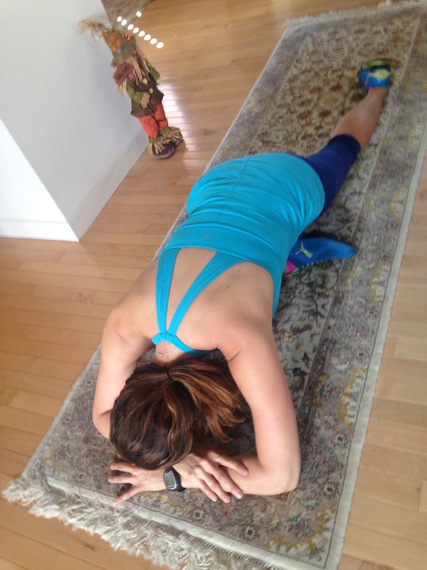
Bring one knee up to that same side wrist. If your leg cannot go parallel to the front of you mat, then only do what you can do. Slide your back leg underneath your back hip so that your back thigh brushes the floor and your back foot remains relaxed. Lift up through your body and then slowly sink down to relax your upper body. This is a tremendous hip opener. It is also a great opportunity to relax your back, including your neck as you take yourself to "sleeping pigeon". Switch to the other side.
Cow Face (Legs only):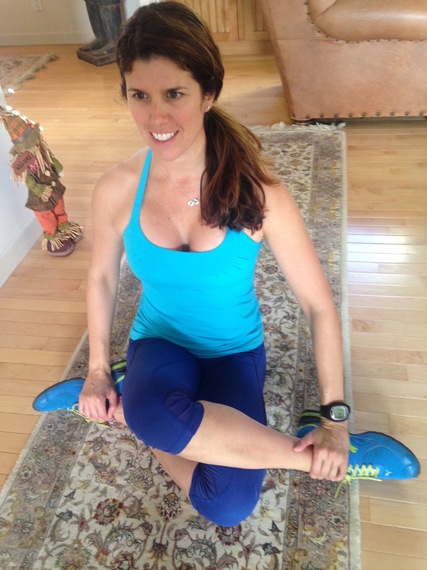
Cross one leg over the other stacking the knees on top of one another. Usually you lift one arm up over your shoulder and the opposite arm behind your back getting a hold of your palms to connect in the back. However, this pose is being shared to open up your hips and lateral muscles deep to the IT band that tend to be tight. You will notice I am sitting up tall in my posture working my spinal erectors and keeping my shoulders down and away from my ears. Switch the configuration of your legs so that your bottom leg is now on top.
Prone Spinal Twist: 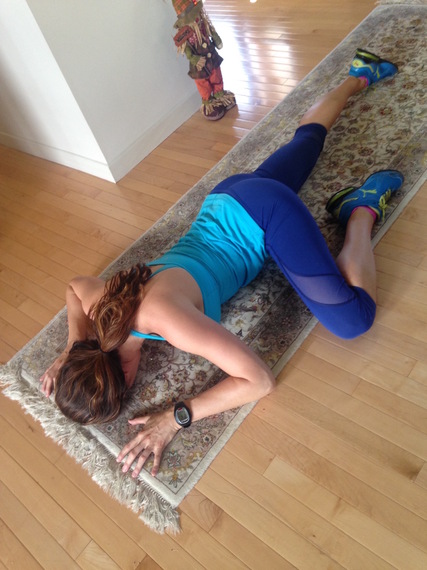
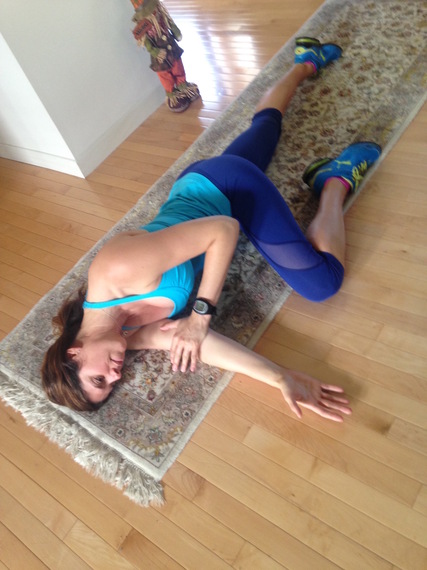
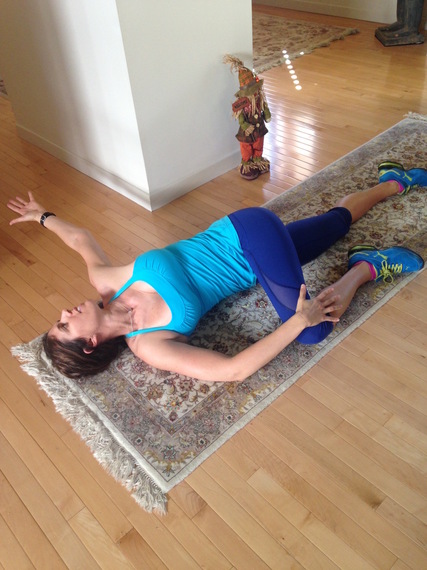
Check out the 3 photo progressions. First start on your belly. Then bring your right knee towards your chest (as you do in bed to hug a pillow). Then slide your left shoulder directly underneath you and avoid jamming your shoulder under yourself. Once you thread your left arm underneath you, rotate your chest open to twist through the spine and reach the right arm over towards the opposite wall. You may use your left hand for guidance to keep your right knee fixed on the floor while you twist. If you feel like your neck cannot reach the ground, simply prop a pillow or towel under your neck to offer neck support and neutral alignment of your spine.
Supine Shoulder Extension: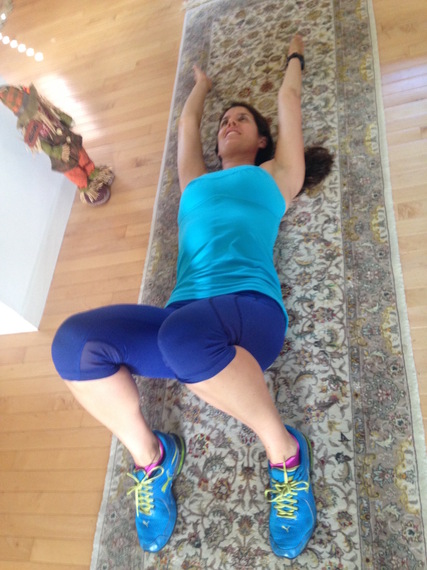
This position is simple. The goal is to open your shoulders while mobilizing your thorax to help improve posture and mobility. If you want more of a stretch, simply lie on a foam roller which will allow an increased range of motion. All you do is lie on your back (supine). With a slight tilt in your pelvis to neutralize the pelvis and lumbar spine, draw your arms directly overhead with your thumbs touching the ground. You may move back and forth between neutral and shoulder extension. Hold shoulder extension for a minimum of 5 counts per repetition.
Eagle Leg Twist: 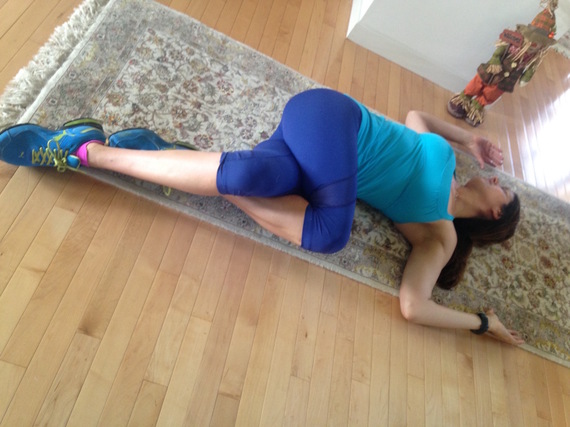
Lying on your back, tightly cross one leg over the next and cause a tourniquet feeling in your hips. You may wrap one foot under the opposite calf to complete the bind. Bring your arms out like a "T". With control, bring your legs to the side. If you don't have the flexibility to support your legs on the ground, simply use a block or any type of riser that keeps your legs relaxed so that you can experience the full benefits of this position.
While these restorative moves don't exhaust all the potential postures you can do to restore your body, they certainly offer you a great beginning to incorporate into your regular weekly routine. Stay tuned for more restorative programs in the future.
Photo credits: Mr Smith